Mexico Flag: A Tale of Identity and Revolution
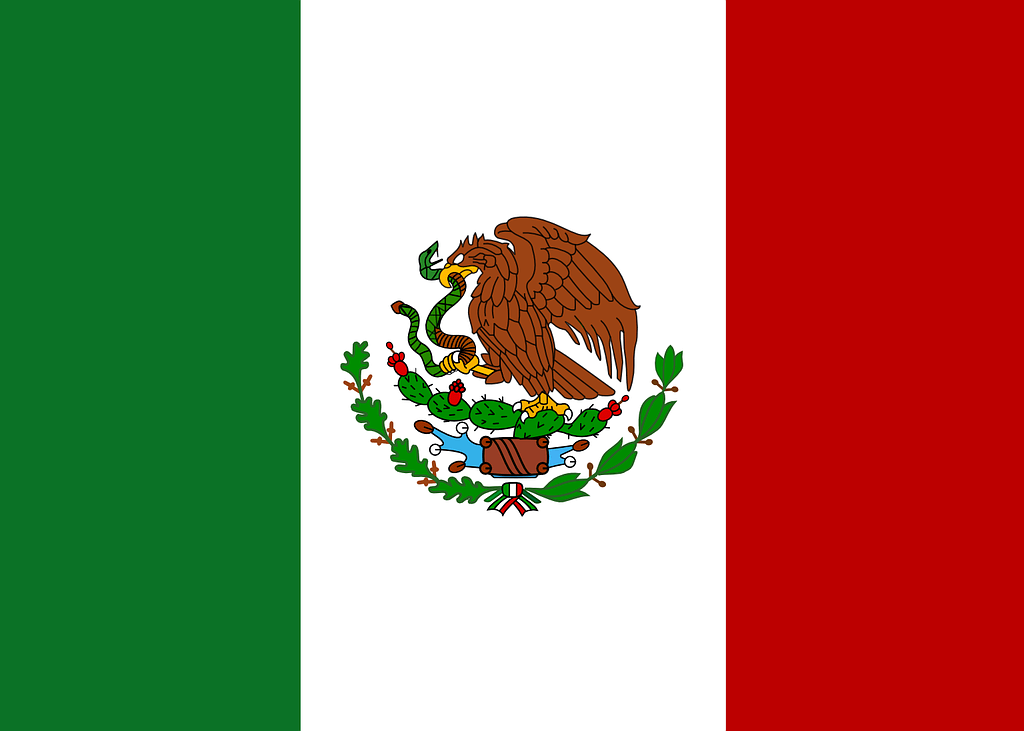
Mexico flag – The green, white, and red tricolor pattern of the flag is visually attractive and has significant historical and symbolic meaning. Each color on the flag carries a deep meaning.
The green stripe symbolizes the nation’s lush landscapes and optimism for a prosperous future. In the heart of the white stripe lies the Mexico coat of arms, a tribute to the country’s indigenous roots and a fusion of ancient Aztec legends with contemporary identity. Meanwhile, the red stripe stands for the courage, valor and sacrifices of those who fought for the nation’s independence.
The iconic image of an eagle perched atop a cactus, clutching a serpent in its beak, harks back to Mexico’s ancient Aztec heritage. This symbol(emblem), adopted on September 16, 1968, captures the nation’s rich cultural tapestry, resilience, and aspirations. Understanding the Mexico flag unveils a captivating story that spans generations, encapsulating the spirit and values of this vibrant nation. Discover the heart of Mexico’s spirit through the emblematic colors of its flag.”
In this blog post, we delve into the captivating history of the Mexico flag, uncovering its origins, evolution, and the profound significance it holds for Mexico and its people.
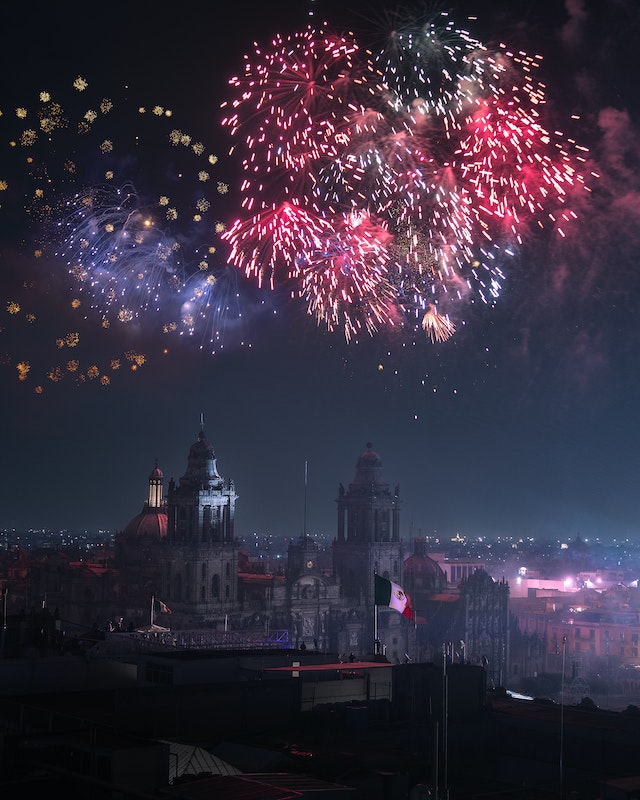
History of the Mexico Flag
The History of the Mexico Flag: A Tale of Identity and Revolution
The Mexico flag stands as a powerful symbol of the nation’s rich history, vibrant culture, and enduring spirit. Its iconic tricolour design is instantly recognizable, but the flag’s journey through time is a story of struggle, triumph, and identity.
The history of the Mexico flag is a narrative of struggle, triumph, and resilience. From its origins as a symbol of rebellion to its present-day representation of national pride, the flag stands tall as a testament to Mexico’s enduring spirit. Its tricolour design is not just a striking visual, but a powerful emblem that encapsulates the heart and soul of a nation striving for greatness while honouring its past. Through the flag, Mexico’s history is woven into its future, creating a vibrant tapestry of identity and aspiration.
By delving into the captivating history of the Mexico flag, we gain a deeper appreciation for the struggles and triumphs that have shaped Mexico into the nation it is today. Its iconic tricolour design tells a tale of identity, unity, and a relentless pursuit of freedom—a story that continues to unfold with each unfurled flag in the wind.
Evolution of the Mexico Flag
The evolution of the Mexico flag is a captivating journey that mirrors the nation’s progress, struggles, and transformations. The flag has undergone several changes throughout history, reflecting shifts in Mexico’s political landscape and its quest for identity.
- Early Revolutionary Flags: During the early 19th century, various revolutionary groups used distinct flags as symbols of their movements. These flags often featured different combinations of colors and symbols, highlighting the diversity of revolutionary ideals.
- Standard of the Three Guarantees (1821-1823): After Mexico gained independence from Spain in 1821, the “Standard of the Three Guarantees” became a prominent flag. This flag featured vertical stripes of white and green, representing the Catholic religion and the independence movement, respectively.
- First National Flag (1823-1824): The first official national flag of Mexico, adopted in 1823, resembled the current Italian flag, with vertical stripes of green, white, and red.
- The Tricolor Flag (1824-present): In 1824, the design that closely resembles today’s Mexico flag was officially established. The tricolor flag consisted of vertical stripes of green, white, and red, with the coat of arms placed at the center of the white stripe. The coat of arms has evolved over time, with variations that reflected Mexico’s changing political ideologies and leadership.
- Modern Adaptations: While the basic design of the Mexico flag has remained consistent, modern adaptations have been introduced for specific occasions. For instance, a version of the flag used during naval operations includes an anchor and a serpent devouring a cactus, symbolizing the founding of Tenochtitlan.
Throughout its evolution, the Mexico flag has consistently represented the nation’s core values, struggles for independence, and unity. The tricolor design and its variations over time stand as a visual representation of Mexico’s history and identity, serving as a reminder of the nation’s enduring spirit.
Historical Significance of the Mexico flag
The Mexico flag carries immense historical significance, serving as a powerful link to Mexico’s struggle for independence, its rich history, and vibrant culture. The flag stands as a visual embodiment of the nation’s journey, representing the ideals, sacrifices, and aspirations that have shaped Mexico.
Connection of the Flag to Mexico’s Struggle for Independence: The tricolor design of the Mexico flag—green, white, and red—has roots that trace back to Mexico’s fight for freedom from Spanish colonial rule. The flag’s evolution coincided with the fervent spirit of independence, symbolizing hope, unity, and resilience. The green stripe reflects the lush landscapes of Mexico and the optimism for a better future. The white stripe signifies unity among Mexico’s diverse people, and the red stripe pays homage to the courage and sacrifices of those who fought for liberty.
Flag’s Role in Mexican History and Culture: The Mexico flag has played a pivotal role in the nation’s history, marking significant events and moments of triumph. During the Battle of Puebla in 1862, where Mexican forces achieved an unexpected victory over the French army, the flag stood as a symbol of bravery and resilience. Cinco de Mayo, the holiday commemorating this battle, celebrates Mexican pride and determination. The flag’s presence in national celebrations, cultural events, and ceremonies reinforces the sense of identity and patriotism among Mexicans.
The Mexico flag transcends its physical form, encapsulating the heart and soul of a nation that has overcome challenges and embraced its heritage. It unites Mexicans under a shared symbol of pride and continuity, reminding them of their roots and the ongoing pursuit of progress. As Mexico’s history continues to unfold, the flag stands as a testament to the enduring spirit of a nation that values freedom, unity, and the preservation of its unique culture.
National Coat of Arms on the Mexico Flag
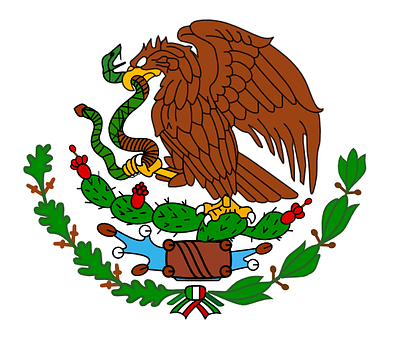
National Coat of Arms on the Mexico Flag: Unveiling its Meaning and Symbolism
The national coat of arms proudly displayed at the center of the Mexico flag holds a wealth of meaning and symbolism, deeply rooted in the country’s history and identity. This emblem is more than just an artistic addition; it encapsulates Mexico’s story of heritage, struggle, and triumph.
Exploring the Elements of the Coat of Arms:
- Eagle and Snake: At the heart of the coat of arms is an eagle perched atop a cactus, clutching a snake in its beak and talons. This image originates from an ancient Aztec legend that foretold the location where the Aztecs should establish their capital, Tenochtitlan. The eagle and snake are powerful symbols representing the eternal struggle between good and evil, while also signifying the merging of different cultures and histories.
- Nopal Cactus: The eagle stands on a nopal cactus, a plant native to Mexico. This cactus holds historical significance as it was believed to be a sign from the gods for the Aztecs to settle in the area that would become their capital. The cactus also represents the land’s fertility and resilience, echoing the strength of the Mexican people.
- Lakes and Mountains: Surrounding the eagle and cactus are water bodies and mountains. These elements represent Mexico’s diverse geography, from its lakes and valleys to its towering mountains. They serve as a reminder of the country’s natural beauty and the challenges it has overcome.
Meaning Behind the Elements:
The national coat of arms mirrors Mexico’s complex history, combining indigenous and Spanish influences. The eagle’s triumphant posture signifies Mexico’s victories and its people’s resilience against adversity. The snake symbolizes Mexico’s ancient roots and the transformation from the past to the present. The nopal cactus and the surrounding landscape tie the emblem to Mexico’s unique terrain and cultural heritage.
This emblem, like the Mexico flag itself, serves as a unifying symbol for the nation. It encapsulates the struggles and successes of Mexico’s history, embodying the spirit of unity and strength that define the Mexican people. The national coat of arms is a timeless representation of Mexico’s identity and the values that have shaped the nation over centuries.
Also Read: Mexico Flag
The Mexico Flag Protocol and Etiquette
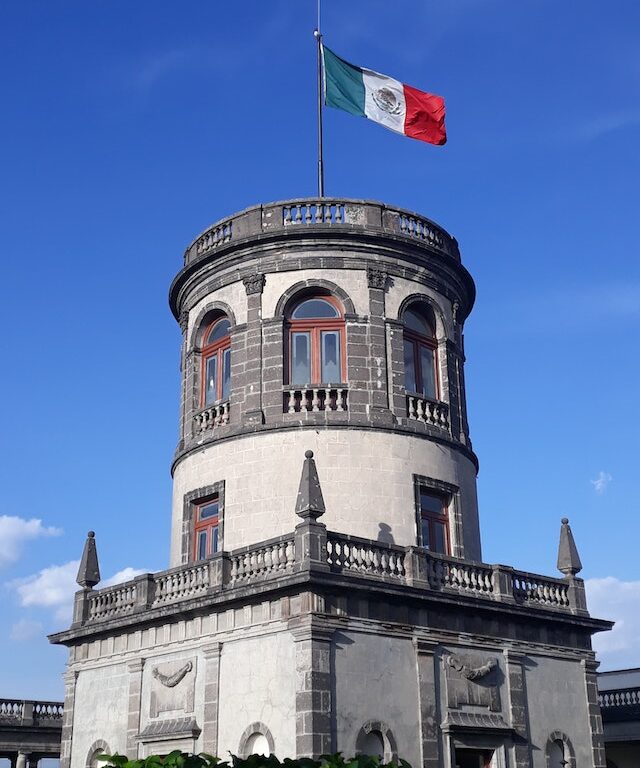
Understanding the proper usage guidelines for displaying the Mexico flag is a way to show respect for the nation’s history and values. Here’s how to display the flag with dignity and pride:
- Occasions for Hoisting the Mexico Flag:
- Independence Day (September 16th): The Mexico flag is hoisted with pride to commemorate the country’s struggle for freedom from Spanish colonial rule.
- Flag Day (February 24th): This day is dedicated to celebrating the flag itself, and it’s a common time to display the flag in schools and public places.
- Locations to Display the Mexico Flag:
- Government Buildings: The flag is often flown at government offices, municipal buildings, and military installations.
- Schools and Educational Institutions: Displaying the flag in schools fosters a sense of patriotism and respect for the country’s history.
- Private Residences: Many individuals display the flag at their homes during important national holidays.
- Proper Display Etiquette:
- The Mexico flag should be displayed in a place of honor, preferably on a flagpole.
- When displayed horizontally or vertically against a wall, the green stripe should be on the left side (viewer’s perspective).
- The flag should be well-maintained and free from tears or damage.
- It should be raised at sunrise and lowered at sunset, unless illuminated at night.
- During events, the flag should be treated with respect, and attendees should stand and face the flag during the national anthem.
- Half-Staff Position:
- The flag is lowered to half-staff on occasions of national mourning, such as the death of a prominent figure or a tragic event. It’s raised to full staff after a certain period.
- Avoiding Disrespect:
- The flag should not touch the ground or any objects beneath it.
- It should not be used for commercial purposes or in any manner that might diminish its dignity.
- Proper Folding and Disposal:
- When not displayed, the flag should be folded respectfully into a triangular shape that shows only the blue and stars.
- When the flag is worn or damaged, it should be retired through a dignified burning ceremony.
By following these guidelines, we can display the Mexico flag with the honour and respect it deserves. The flag is a symbol of unity, history, and pride—a representation of the nation’s journey and its bright future.
Controversies and Debates
While the Mexico flag holds deep significance and pride for the nation, there have been controversies and misconceptions that have emerged over time. It’s important to address these issues to ensure a clear understanding of the flag’s design, usage, and symbolism.
- Misconceptions about the Colours:
Misconception: There have been misunderstandings about the symbolism of the flag’s colours, particularly the placement of the colours and their meanings.
Clarification: The green stripe is on the hoist side, representing hope and the lush landscapes of Mexico. The white stripe signifies unity and purity, while the red stripe symbolizes the blood shed by heroes during the fight for independence. The flag’s design is intentional and grounded in the nation’s history.
- Use of the Flag for Political Purposes:
Controversy: At times, the Mexico flag has been used by political groups to promote specific agendas, leading to debates about its proper usage.
Clarification: The flag’s design and colours are meant to unite the nation under shared values and pride, not to be exploited for personal or political purposes. Displaying the flag should prioritize unity and respect for Mexico’s heritage.
- Modifications of the Coat of Arms:
Controversy: There have been instances where variations of the coat of arms have appeared, causing confusion about its proper design.
Clarification: The coat of arms is a central element of the Mexican flag and holds a specific design, including the eagle, snake, nopal cactus, and surrounding landscape. Deviating from this official design dilutes the emblem’s historical and cultural significance.
- Lack of Knowledge about Flag Protocol:
Misconception: Many individuals are unaware of proper flag protocol and etiquette, leading to unintentional disrespect.
Clarification: Learning and following flag protocol is essential to honour the flag’s symbolism. This includes correct methods of raising and lowering the flag, displaying it on appropriate occasions, and treating it with respect.
As with any symbol of national pride, the Mexican flag is not immune to controversies and misconceptions. It’s crucial to address these issues by promoting accurate information about the flag’s design, significance, and proper usage. By understanding the history and context behind the flag, we can foster a deeper appreciation for its symbolism and ensure that it continues to inspire unity and respect among Mexicans.
Modern Cultural Significance
The flag of Mexico, also known as the “Bandera de México” or “Lábaro Patrio,” holds deep cultural significance and is widely celebrated and honoured throughout modern Mexican society. Its iconic design and colours represent the country’s history, culture, and values. Here’s how the flag is celebrated and integrated into various aspects of Mexican culture:
- National Holidays and Events: The flag is prominently displayed during national holidays and events, such as Independence Day (Día de la Independencia) on September 16th, which commemorates Mexico’s struggle for independence from Spanish rule. During this time, Mexican streets, buildings, and public spaces are adorned with the flag’s colours – green, white, and red – creating a festive and patriotic atmosphere.
- Official Institutions and Government Buildings: The flag is flown at government offices, institutions, and military installations across the country. It holds a place of honour alongside other national symbols, reinforcing its significance as a representation of the Mexican state.
- Education: Mexican schools and educational institutions emphasize the importance of the flag as a symbol of national identity. Students learn about the history and symbolism of the flag as part of their curriculum. In many schools, students raise the flag and recite the national anthem as a daily ritual.
- Sports and International Events: The flag is proudly displayed during international sports events, such as the Olympics and the FIFA World Cup, where Mexican athletes and teams compete on the global stage. Fans often paint their faces with the flag’s colours and wave flags in support of their teams.
- Cultural Festivals: Mexican festivals and parades often incorporate the flag’s colours and symbolism. For instance, during the Cinco de Mayo celebrations, which commemorate the Battle of Puebla, people dress in traditional attire and decorate their surroundings with green, white, and red.
- Art and Media: The flag’s colours are frequently used in Mexican art, music, and media to evoke a sense of national pride and identity. Artists incorporate the flag’s design into their works, and it’s not uncommon to see depictions of the flag in movies, TV shows, and advertisements.
- Patriotic Symbols: The flag’s eagle and cactus emblem, as depicted on the coat of arms, are featured on various official documents, currency, and public spaces. This emblem is also integrated into military insignias and official uniforms.
- Civic and Community Celebrations: Mexican communities across the country celebrate local holidays and events with parades, performances, and displays that incorporate the flag. These celebrations foster a sense of unity and pride among community members.
- Commercial Use: The flag’s colours and design are sometimes used in commercial products, particularly around national holidays. However, there are guidelines and regulations in place to ensure that the flag is treated with respect and not used in a disrespectful or inappropriate manner.
- Social Media and Digital Space: In the digital age, the flag’s symbolism extends to social media profiles, banners, and posts during important national events. This allows individuals to express their patriotism and connect with others who share similar sentiments.
Overall, the flag of Mexico continues to play a vital role in modern Mexican society, symbolizing unity, heritage, and the nation’s journey toward independence and progress. Its integration into various aspects of Mexican culture reinforces the country’s identity and fosters a sense of shared pride among its citizens.
Flag-Related Traditions and Events
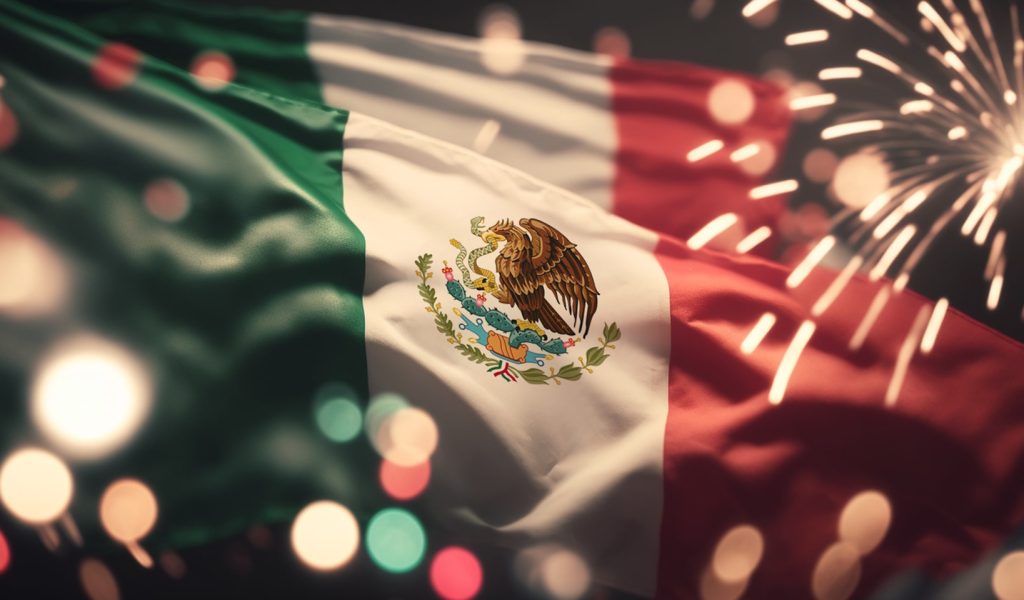
Mexico has several festivals, holidays, and events that are centered around the flag and contribute to national unity and pride. These celebrations highlight the historical significance and cultural importance of the flag, fostering a sense of identity and shared heritage among Mexicans. Here’s an overview of some of these flag-related traditions:
- Independence Day (Día de la Independencia) – September 16th: This is one of the most significant flag-related events in Mexico. It commemorates the beginning of the Mexican War of Independence against Spanish rule in 1810. The celebrations typically start on the evening of September 15th with the “Grito de Dolores” (Cry of Dolores), a reenactment of Miguel Hidalgo’s call to arms for independence. Mexican President rings the historic bell in Mexico City and shouts “¡Viva México!” thrice, bells ringing, fireworks, and the national anthem come next. The flag is prominently displayed, and people dress in the flag’s colours, creating a strong sense of patriotism and unity.
- Flag Day (Día de la Bandera) – February 24th: This holiday is dedicated specifically to the flag itself. Schools, government institutions, and public spaces hoist the flag and organize ceremonies to Honor its symbolism. Many schools also hold educational events to teach students about the flag’s history and meaning.
- Cinco de Mayo – May 5th: Although often confused as Mexico’s Independence Day, Cinco de Mayo actually commemorates the Mexican victory over French forces at the Battle of Puebla in 1862. While not a national holiday, it’s celebrated with parades, traditional dances, and displays of Mexican pride. The flag’s colours are a prominent part of these celebrations.
- Mexican Revolution Day (Día de la Revolución) – Third Monday of November: This day celebrates the Mexican Revolution, a major socio-political movement that began in 1910. Parades and festivities take place across the country, often involving representations of key figures and events from the revolution. The flag is a central part of these events.
- Patriotic Parades and Festivals: Many cities and communities hold patriotic parades and festivals throughout the year, particularly around national holidays. These events feature floats, performances, and displays that incorporate the flag’s colours and symbols. They provide an opportunity for people to come together, celebrate their heritage, and express their pride in being Mexican.
- International Sporting Events: During events like the Olympics and the FIFA World Cup, Mexicans rally behind their athletes and national sports teams. The flag is a common sight in stadiums and on the streets, as people show their support and enthusiasm for their country’s representatives.
- Community Celebrations: Various towns and neighbourhoods hold their own unique events that integrate the flag. These can range from cultural fairs to historical reenactments, all aimed at fostering a sense of belonging and unity among residents.
These flag-related traditions and events contribute to national unity and pride in several ways:
- Cultural Continuity: By commemorating historical events and celebrating the flag’s symbolism, these events connect present-day Mexicans to their rich cultural heritage and historical struggles.
- Shared Identity: Participating in flag-related celebrations reinforces the idea of a shared Mexican identity, regardless of individual differences. It creates a sense of belonging to a larger community.
- Patriotism: Publicly displaying the flag and participating in these events fosters a deep sense of patriotism and love for the country.
- Educational Value: Many of these events have an educational component, ensuring that younger generations understand the importance of the flag and its role in Mexico’s history.
- Positive National Image: These celebrations often attract attention from both locals and tourists, showcasing Mexico’s vibrant culture and the unity of its people.
Overall, flag-related traditions and events in Mexico play a crucial role in preserving the nation’s heritage, promoting national unity, and instilling a sense of pride among its citizens.
Global Recognition and Influence

The flag of Mexico holds significant visibility and recognition in various international events, organizations, and instances where it symbolizes Mexican identity on a global scale. Here are some notable examples:
Olympic Games: The Mexico flag is prominently displayed during the opening and closing ceremonies of the Olympic Games. Mexican athletes proudly carry the flag while entering the stadium during the Parade of Nations, representing their country on a global stage. The flag’s colors are also often worn by fans and supporters to show solidarity with their athletes.
FIFA World Cup: Similarly, during the FIFA World Cup and other international soccer tournaments, the Mexico flag is widely seen. Fans from around the world recognize the distinctive green, white, and red colors, and Mexican supporters often paint their faces, wear flag-themed clothing, and wave flags to show their enthusiasm for their national team.
United Nations: The Mexico flag is a familiar sight at the United Nations headquarters and during international conferences. It represents Mexico’s active participation in global diplomatic efforts, discussions on important issues, and commitment to international cooperation.
Trade and Economic Organizations: In trade negotiations, economic forums, and international trade shows, the Mexican flag represents the nation’s economic interests, trade partnerships, and its role as a global player in various industries.
Cultural Festivals and Art Exhibitions: Mexico’s cultural heritage, including its flag symbolism, is often celebrated at international cultural festivals and art exhibitions. These events provide a platform for showcasing Mexican traditions, art, music, and cuisine, all of which contribute to the nation’s global identity.
Embassies and Consulates: Mexican embassies and consulates around the world prominently display the flag. It serves as a welcoming symbol for Mexican citizens abroad and as a representation of the country’s diplomatic presence and engagement with other nations.
International Humanitarian Efforts: When Mexico participates in international humanitarian efforts or disaster relief missions, the Mexico flag is displayed alongside other national flags. This showcases Mexico’s commitment to assisting other nations in times of need.
Cultural Exchange Programs: Mexico often participates in cultural exchange programs, which may include music performances, dance troupes, and art exhibitions. These events help promote a deeper understanding of Mexican culture and values on a global level.
Tourism and Travel: The Mexico flag is often seen in tourist destinations, airports, and travel-related advertisements. It represents Mexico as a diverse and vibrant travel destination and contributes to the country’s global image.
International Sports Leagues: Mexican athletes compete in various international sports leagues and events, from boxing to motorsports. The flag is a recognizable representation of their Mexican identity and heritage in these competitions.
In each of these instances, the Mexico flag serves as a powerful symbol of national identity, unity, and pride on a global scale. It connects Mexicans around the world, fosters a sense of belonging, and showcases the country’s rich history, culture, and values to an international audience.
In summary, the Mexico flag’s visibility in international events and organizations is a testament to Mexico’s global influence and identity. It symbolizes the country’s history, culture, contributions, and commitment to various aspects of international cooperation and engagement.
Conclusion:
The flag of Mexico stands as an enduring symbol of utmost importance, embodying the nation’s unity, history, and culture. Its significance is woven into the fabric of Mexican society, resonating across generations and reaching beyond borders. Through its vibrant green, pure white, and bold red hues, the flag tells a story that transcends time, connecting the past, present, and future.
At the heart of its importance lies its role as a unifying force. The flag brings together diverse peoples under a shared identity, fostering a sense of belonging and togetherness that transcends differences. It stands as a reminder that, regardless of individual backgrounds, Mexicans share a collective heritage that binds them as one.
The flag’s history is a testament to the nation’s struggle for independence and its ongoing journey toward progress and self-determination. It is a visual reminder of the sacrifices and achievements of those who fought for Mexico’s sovereignty. This history resonates in every fold of the flag, inspiring a profound sense of patriotism and pride.
Beyond its historical significance, the flag is a repository of culture and tradition. It finds expression in festivals, art, music, and community celebrations that celebrate Mexican identity. Its colours and symbols are intertwined with the daily lives of people, a constant reminder of their roots and the values they hold dear.
In a world of interconnectedness, the flag of Mexico stands as a recognizable beacon on the global stage. From international sports events to diplomatic forums, it proudly represents Mexico’s voice, values, and contributions to the international community. It exemplifies the nation’s commitment to unity, cooperation, and mutual understanding among nations.
In conclusion, the flag of Mexico is far more than a piece of cloth; it is a living emblem that encapsulates the essence of a nation. It unites Mexicans under a common banner, reflects their history, and celebrates their culture. Through its enduring importance, the flag continues to inspire unity, preserve heritage, and project the nation’s identity to the world, standing tall as a testament to the unwavering spirit of Mexico.
Read More Articles on Flags – You May Like
FAQs: Mexican Flag - Mexico Flag
- What is the flag of Mexico?
Ans: The flag of Mexico, also known as the “Bandera de México” in Spanish, consists of three vertical stripes of green, white, and red, with the Mexican national emblem, the coat of arms, in the center of the white stripe.
2. What is the significance of the Mexico flag?
Ans: The Mexico flag holds deep historical and cultural significance for the country, representing its struggle for independence and its unique heritage.
3. What are the colors of the Mexico flag?
Ans: The Mexico flag consists of three vertical stripes: green on the left, white in the middle, and red on the right.
4. What do the colors of the Mexico flag symbolize?
Ans: Green represents hope and independence, white symbolizes purity and religion, and red stands for the blood shed by the country’s heroes.
5. How old is the Mexico flag?
Ans: The current design of the Mexico flag was officially adopted on February 24, 1984, but its design elements date back to the early 19th century.
- How has the Mexico flag evolved over time?
Ans: The flag’s design has seen several changes since its initial creation in 1821, with variations in the coat of arms and proportions.
- What is the meaning of the eagle and snake on the Mexico flag?
Ans: The eagle perched on a cactus devouring a snake is a symbol derived from Aztec mythology. It signifies the founding of Tenochtitlan, which later became Mexico City.
- What are the official proportions of the Mexico flag?
Ans: The Mexico flag has a width-to-length ratio of 4:7, with the flag divided into three vertical stripes of equal width.
- When is the Mexico flag flown at half-mast?
Ans: The Mexico flag is flown at half-mast on national mourning days or to commemorate significant national events.
11. Are there any rules for flag etiquette in Mexico?
Ans: Yes, there are specific rules for displaying and respecting the Mexico flag, such as raising it in the morning and lowering it at sunset and not to touch the ground.
12. What is the history behind the adoption of the current Mexico flag design?
Ans: The current design was adopted in 1984 to standardize the flag and make it consistent across different government entities.
13. Has the Mexico flag ever changed due to political reasons?
Ans: Yes, there have been instances where the coat of arms on the flag was altered to reflect changes in government.
14. What is the significance of September 16th in relation to the Mexico flag?
Ans: September 16th is Mexican Independence Day, and the flag plays a prominent role in the celebrations and parades on this day.
15. How is the Mexico flag used in international settings?
Ans: The Mexico flag is displayed at Mexican embassies, consulates, and international events to represent the country.
16. Are there any interesting facts or trivia about the Mexico flag?
Ans: One interesting fact is that the eagle on the flag can be facing left or right, depending on whether it’s a civil or war flag.
17. What are some common misconceptions about the Mexico flag? –
Ans: A common misconception is that the eagle represents the modern Mexican state, but it actually represents the Aztec founding legend.
Another common misconception includes confusing the Mexican flag with the Italian flag due to their similar colors and assuming the eagle is a reference to the United States. However, the eagle represents Mexico’s history and culture.
18. How is the Mexican flag used during Independence Day?
Ans: During Mexico’s Independence Day celebrations on September 16th, the flag is prominently displayed in various patriotic events and parades
- When was the current Mexican flag design adopted?
Ans: The current design of the Mexican flag was officially adopted on February 24, 1984.
- What is the origin of the Mexican flag’s design?
Ans: The design of the Mexican flag is inspired by the Aztec legend of the founding of Tenochtitlán and is based on the vision of an eagle and a serpent on a cactus.
- Are there any special traditions associated with the Mexican flag?
Ans: One tradition involves the “Grito de Dolores,” where the President of Mexico reenacts the cry for independence and waves the flag on Independence Day.
Top of Form
22. Who designed the Mexico flag?
Ans: The Mexico flag, in its current form, was designed by Francisco Eppens Helguera in 1968. He incorporated elements of the previous flag designs into the modern version.
- When was the Mexico flag officially adopted?
Ans: The current design of the Mexico flag was officially adopted on September 16, 1968.
- How does Mexico celebrate Flag Day?
Ans: Flag Day, or “Día de la Bandera,” is celebrated on February 24th in Mexico. It is a day dedicated to honoring the flag through various ceremonies and events.
- What is the largest Mexico flag in the world?
Ans: The largest Mexico flag in the world is often displayed in the city of Piedras Negras, Coahuila, and is known for its impressive size.


